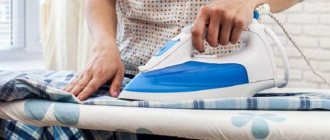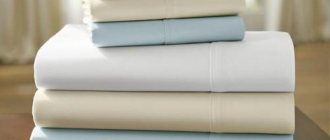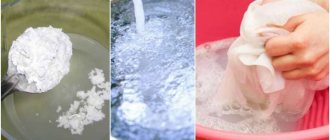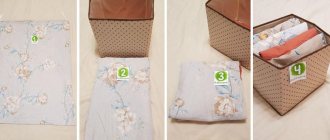Why you need to change your bed linen often
This is due to a number of factors:
- Hygiene. Sweat, skin particles, creams and body lotions - all this quickly stains the fabric. Many people have probably noticed that sleeping on a clean floor is much more pleasant. And it’s not just about the sensations, because clean fabrics smell and ventilate better. Therefore, sleep on clean sheets is always stronger and more peaceful.
- Dust mites live in large numbers in human beds. You won't be able to get rid of it forever, even if you want to. But if you regularly wash textiles at high temperatures, they will become noticeably smaller. Why do you need to get rid of dust mites? The fact is that common allergies to dust are caused by their waste products. Even if you have not previously suffered from itching, coughing, or other manifestations of allergies, over time it may develop.
- Bacteria, viruses, fungi Warmth and moisture from the body create favorable conditions for them to grow. The less often you change your bed linen, the more unwanted microorganisms live around. This can cause respiratory diseases, infections, etc.
How often should I wash it? It is recommended to do this at least once a week
In some cases, it may need to be washed more often.
Storage
Methods for saving bed linen when it is not used for its intended purpose differ, but have a general classification.
On shelves, in stacks:
- This is what most housewives do: just put clean, ironed and folded laundry on top.
- A separate type classification (pillowcases, sheets, duvet covers) or color classification is practiced. The disadvantages include the difficulty of getting an item from the bottom of the stack - you will have to disturb it all. Often there is a need to sort out the upper elements that lie unevenly.
- The problem can be easily solved if the bed linen is complete: the rest of the set components are collected in the pillowcase.
- On hanging shelves.
- The compact fabric shelf has proven itself to be excellent for storing linen not in closets, but, for example, in pantries.
- It is convenient to combine by type, color or any other sorting method.
In chests of drawers and drawers:
- Compact and convenient. Similar to storing on shelves in a closet.
- The visibility gets worse and sometimes you have to go through the entire stack to find and get the right thing.
- If the laundry is lying very closely, if stored for a long time and high humidity in the room, it can fade, become damp, and become moldy.
- When there are few things, they are stored in a drawer of the closet - excellent ventilation, and everything is visible.
Rolls on shelves:
- Very original, but costly and impractical.
- Relevant for storing in boxes or furniture organizers, when you need to take it out not from the side, but from the top.
- It doesn’t always look pretty - you get the feeling that things are just thrown together in a heap.
- There is a chance that the remaining rolls will unwind if you take one out.
In containers:
- Saving bed linen in special plastic containers, vacuum bags, organizers or shaped fabric containers with mesh “windows” is convenient and practical.
- Dust does not settle on the fabric.
- Looks beautiful anywhere you store it.
- It is convenient to sort according to the accepted methodology.
Each housewife needs to decide for herself how it will be convenient to store laundry in a particular case.
Tip: next to other things of the same type, the differences are immediately visible and it becomes clear how often you need to change old bedding for new ones. This is done as it wears out.
If you change it rarely
Sleeping on dirty sheets has many negative consequences.
Changing pillowcases and duvet covers is a hassle: you need to take off the old set, wash, iron, and then put on a new one. This takes a lot of time, so many people prefer to postpone this procedure “for one more week,” and then for another 1, and so on. Unfortunately, sleeping on a dirty bed can have a number of negative consequences. If you rarely change it, prepare for:
- Increased risk of developing allergies. A dirty bed contains many dust mites. In the spring and summer, allergens also settle on the bed: pollen, plant particles. A stuffy nose, watery eyes, and itching will have a bad effect on the quality of your rest.
- Deterioration of skin and hair condition. During sleep, the skin is constantly in contact with the fabric. If it is dirty, it will have a bad effect on the condition of the skin: acne, rashes, inflammation will appear on it, and the skin will become oily. This is especially true for those who have problem skin.
- Increased risk of respiratory diseases and infections.
What factors influence the frequency of changing linen
The frequency depends on various factors: season, age, how much you sweat at night, whether you use night cosmetics, etc. In some cases, it needs to be re-laid just a few days after the first use. Let's consider the question in more detail.
Seasons
- In winter, it is allowed to remake the bed less often - once every two weeks. People do not open windows during this period, so allergens such as pollen or street dust cannot fly into the house and onto the sleeping bed. In winter, the rooms are not so hot, so the body does not produce as much sweat.
- In the spring, a lot of pollen and other allergens enter homes through open windows. If allergic reactions worsen at night, wash your sheets and other textiles twice a week.
- In summer, it is also better to do this more often than the accepted norm. In summer it gets hot even at night - this causes increased sweating.
- How often should I re-lay it in the fall? At this time of year, you can reduce the frequency to winter values.
Other reasons
8 reasons to make your bed more often
- Presence of pets.
Many owners of cats and dogs do not prohibit their pets from sleeping in their beds. Unfortunately, pets do not take care of hygiene as carefully as people, so fur, dirt, and bacteria get on the bed. If your pet likes to climb into bed, wash the bedding as often as possible—every few days. - If you are sick,
it is better to change it more often. Especially if there is an order to constantly lie in bed. The human bed is an extremely favorable environment for the growth of bacteria. A weakened body should not come into contact with germs. - Do you like to eat while lying in bed?
Even the most careful eater will leave a few crumbs in the bed. Just accept this fact and try not to eat in bed. If it is impossible to break the habit, you will have to remake the bed after a meal so as not to turn it into a “buffet” for bacteria. - for people with excessive sweating
to change it more often - increased humidity causes accelerated growth of bacteria. Also in this case, it is recommended to use waterproof mattress covers. - Do you actively use skin lotions and night cosmetics?
If you use products on your face, you can simply wash your pillowcases regularly or place a clean towel on your pillow every day. If you have to apply creams to the body, it is better to increase the frequency of replacing the entire set. In this case, we also recommend waterproof mattress covers so that the components of the cream do not stain the mattress cover and become a breeding ground for bacteria. - An allergy to house dust
is a reason to wash textiles and mattress covers more often. When changing sheets, a lot of dust gets into the air; it is better to wear a respirator. - If you prefer to sleep naked
, you also need to wash your sleeping accessories regularly. - Age
. Children need to change their bedding more often than adults. Newborns need to remake their sleeping bed once a day, children from 2 years to 12 - twice a week. Teenagers are also advised to change their kit to a fresh one more often due to increased sweating. About once every 4 days. To reduce problems with your facial skin, wear new pillowcases more often.
Preparation for the process
Preparing bed linen for washing is a mandatory condition that should not be neglected.
Basic recommendations:
- Go through your laundry, sorting it by color and fabric type. White, light, colored and black items are washed separately.
- Separate the laundry into sets if they have different colors.
- Study the manufacturer's information on the label.
- Shake the product several times to remove dust.
- Turn pillowcases, duvet covers and mattress covers inside out. Remove dirt that has accumulated in the corners.
If there are difficult stains on the fabric, for example from blood or wine, they need to be washed in advance.
Tips for every day
- Take your time to cover the bed with a blanket or remove pillows and blankets immediately after sleep. Give them time to air out and dry. If the weather permits, leave the window open.
- Wash bed linen at a temperature of at least 60 degrees. Not every set (especially cheap ones) can withstand frequent washing, so buy quality sets that can be washed at high temperatures. Consider whether you need expensive sets made from premium fabrics that look good but can be cleaned on a gentle low-heat cycle. Washing at a low temperature will not kill all bacteria and mites.
- Natural fabrics are preferable - they breathe better and absorb moisture, which quickly evaporates.
- If possible, try to iron textiles after washing. High temperatures are even more effective at killing microorganisms that can survive bathing in a washing machine.
- Don't go to bed with wet hair. This not only causes bacterial growth, but also ruins the filling of the pillow. Especially if there is fluff or feathers inside it.
- Buy several sets at once. This will save you from a situation where the old one has already been sent to the basket, but there is no new one in the closet.
Washing rules and disinfection procedures
Sets made of calico, satin and other types of textiles will last for several years, will not shrink, will not come apart at the seams and will not fade if you follow simple care rules:
- Wash bedding separately from other items.
- Colored sets should be washed separately from plain ones. Do not mix products from several sets with different colors.
- Use the washing mode recommended by the manufacturer and indicated on the packaging or label.
- For everyday washing of lightly soiled laundry, use a temperature range of +40...+60°C. For delicate fabrics, set the water heating to +30...+40°C.
- Before washing, turn the garment inside out and remove any accumulated dust and threads from the corners.
- To disinfect linen and cotton fabrics, use the “boiling” mode.
- Remove stubborn stains with bleaches suitable for this type of textile. For undyed fabrics, use chlorine-containing preparations such as “Whiteness”; for fabrics with a printed pattern, use oxygen bleaches in the form of powder or liquid.
- Dry naturally at room temperature or in the fresh air.
- Be sure to iron. Use the mode appropriate for the type of fabric. For better smoothing and complete destruction of harmful microorganisms, use the steam function.
New bedding should be washed and ironed before first use. Treatment with water, detergents and high temperature will help clean the fabric from factory dust that has become embedded in the structure of the fibers during cutting, sewing and packaging. The first wash will rid the textile of paint particles and special preparations that are used by manufacturers to give the products a more attractive appearance.
Rules for caring for bed linen
A few simple tips for proper care of bedding fabrics.
Sheets
Do not place sheets on top of a mattress or sofa. We recommend using mattress protectors. For what? This is a kind of protective barrier that will help keep the mattress cover or sofa upholstery clean and reduce the amount of dust on them. Thanks to the fact that mattress covers are easier to wash, you can keep your sleeping area clean more effectively.
When washing, use a 60 degree setting (if the fabric allows) and do not use a lot of powder. To completely remove any detergent residue, use a double rinse. Powder residue may cause allergies.
Pillowcases
Before washing, you must turn all pillowcases inside out. This will preserve the pattern and color longer. Afterwards, it is recommended to iron the items with an iron if the fabric cannot be washed at high temperatures.
It is recommended not to use bleach and spin textiles at 500-600 rpm.
Removing difficult stains
To combat difficult stains, it is not necessary to use aggressive detergents. Available and inexpensive substances that everyone has in their home come to the rescue:
- Blood. It can be removed using hydrogen peroxide, which is applied to a cotton pad and wiped with it until the stain disappears completely.
- Urine, sweat and other secretions.
Baking soda and vinegar work well with such stains. They are applied one by one to the fabric, wait until the foaming reaction ends, leave for 30 minutes and wash as usual. - Oily spots. They can be easily removed using a mixture of salt and starch. The powder is applied to the stain, left for an hour, and then washed.
- Cosmetics stains. The most accessible means for removing them is laundry soap. It is grated, diluted with water and applied to the stain as a paste. After 30 minutes the item needs to be washed.
- Wine, coffee, tea. You can neutralize the coloring pigment with ammonia. It is applied to a cotton pad, which is used to wipe the stain until it disappears completely.











